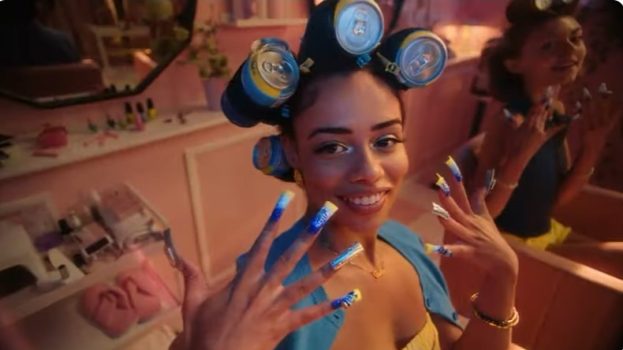Nestle has entered the liquid water enhancing market, taking on Kraft’s Crystal Light and Mio with Nesfruta, a fruit-based concentrate.
Canada is the first Nestle market to launch the line, which was developed locally in response to consumer demand, says Ryan Saunders, marketing leader, beverages, Nestle Canada.
Consumers were looking for ways to drink more water, introduce flavour customization and increase beverage consumption on the go, he says, so a portable flavour enhancer has been in development since late 2010.
“The biggest thing consumers tell us is, ‘Water is healthy and I know I don’t drink enough of it.’ It’s the sixth, seventh and eight glasses of water that are the challenges,” Saunders says. “[So they said] Nestle, help me with flavours to make that fun.”
Nesfruta soft-launched in June 2013 with an OOH campaign by Publicis that ran during the summer months as well as on-going in-store marketing to drive trial. Marketing for the rest of 2013 will include PR pushes by Apex PR, launched in October, and the continued push to encourage store trials, including partnership with other Nestle brand, Nestle Water, for joint-coupons and product placement. The brand has a major marketing push planned for 2014, he says. It also worked with Monk Williams for overall strategy and package design and Marketing Core for in-store.
The brand originally launched with OOH to build awareness with its target demo of 35-year-old women who are on the go, looking for healthy beverage alternatives. Trial offers made up the majority of the in-store marketing, Saunders says, because getting people to sample the product turned them into “believers.” He expects the brand to continue to emphasize sampling and trial in the next wave.
Though it’s still early, the brand has experienced a 16% repeat business rate, “far exceeding” original expectations, he says, adding it has also exceeded financial targets originally predicted.
And though Nesfruta isn’t the first liquid enhancer to market, with Kraft’s Mio and Crystal Light beating it out by a good year, Saunders isn’t worried. He says the category, which was largely based on powders, was stagnant and falling, and that since injecting the new liquid products into the mix, the category as a whole has seen growth. He predicts flavour enhancers will continue to heat up as retailers, who’ve thus far been pleased with the new developments, will likely begin unveiling their own private label lines.
























